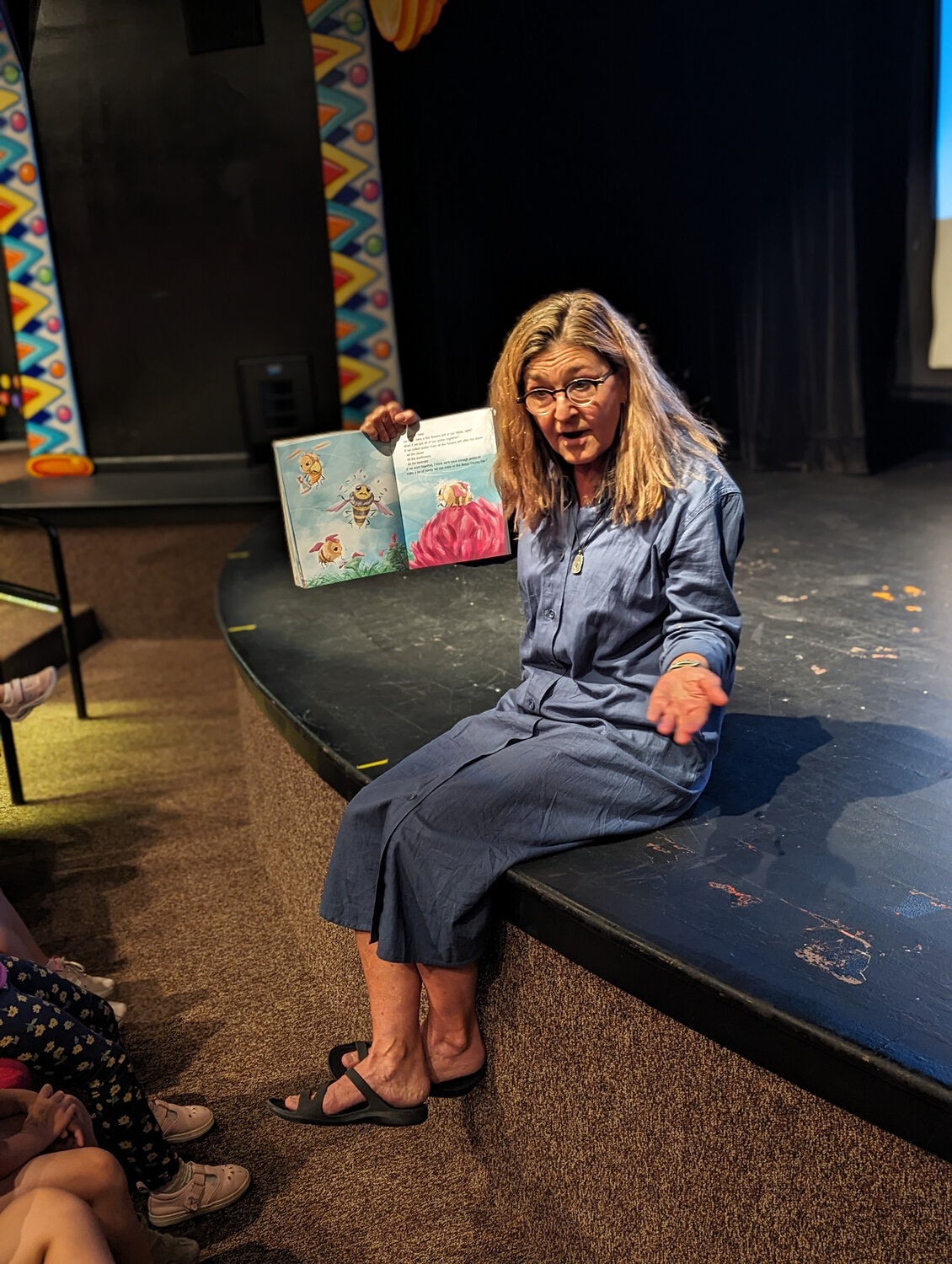Buzzing about at Long Island Children's Museum
There’s a special “day” for everyone and everything it seems. So it’s certainly fitting that the helpful yet often misunderstood honey bee gets its due. And that brings us to Aug. 17, aka “National Honey Bee Day.” Long Island Children’s Museum goes all out to celebrate the hard-working insect with two days of “Honey Hoopla” activities, Aug. 16-17.
The museum has been home to over 20,000 honeybees year-round since 2012, when a hive was introduced to the Feast for Beasts exhibit, which opened in January of that year. The museum welcomed visitors to the first “Honey Hoopla” that year so that everyone could experience the first harvesting of honey from the then newly active hive.
Now Honey Hoopla returns — in a big way.
Families can check in on the busy bugs from an observational beehive, still located in the Feasts for Beasts exhibit. There, honeybees travel in and out of the hive, pollinating flowers in the museum’s pollinator garden and working together to create a productive thriving colony.
“They all have an important task to do, and they really stick to that role. And then, of course, there’s the queen, the leader of the hive,” says Ashley Niver, the museum’s director of education.
The fruit of their labors? Lots and lots of honey, of course
Color, aroma, and taste can change based on the nectar of the flower. Families are welcome to taste many different varieties of honey, including, of course, from the museum’s honey harvest. And for those interested, the museum’s honey is available for purchase in the Museum Store.
“A lot of people maybe don’t know that honey can taste different from different varieties of flowers or the location. We’re offering different honey varieties that the kids can taste test and try to match up,” Niver says.
Bees certainly give us more than that sweet treat. Families become fully involved in exploring the role of honey bees in our ecosystem through hands-on activities.
Visitors will learn that honeybees are responsible for pollinating some of Long Island’s most abundant crops including melons, pumpkins, tree nuts, and berries; and that the honey bee population is in danger and decreasing rapidly. Without these pollinators, we would lose some of our favorite foods such as chocolate, grapes, apples, and pears.
‘Families can also explore the use of honeycombs, from which wax is made. The “Happy Bee-day” activity is an opportunity to make and decorate beeswax birthday candles.
“They’ll have a strip of colored beeswax and wicks they’ll wrap and roll up to create the candle, and then any scrap pieces of wax can be used to decorate it,” says Niver.
A local beekeeper will be on hand to demonstrate how honey is harvested from those honeycombs. In addition, kids can get involved in bee-themed crafts throughout the galleries that highlight how we can help the bees so that our fruit and vegetable crops can be healthy.
After some time buzzing around, visitors might want to take a break, with a free theatrical reading of Gay Thomas’ book, “Beezy County Fair: A Bee Tale,” at 11 a.m. and 12:30 p.m. The charming story engages families with adorable illustrations and an uplifting message about cooperation and the great benefits of working together for a common goal, along with plenty of bee facts.
While we understand that honey bees do so much for our environment, climate change and pesticides put the insects at risk of colony collapse disorder, where worker bees will exhibit abnormal behavior that leads to the destruction of the colony.
“They’re in danger of continuing to decrease due to different environmental factors,” Niver explains. “If we don’t have the bees here to help us pollinate, then we don’t have the abundance of crops that we can use for our food, and we’ll lose the success of our crop.”
To that end, the museum has launched its Name a Honey Bee Campaign so that visitors can join in bee preservation efforts. A donation of $10 allows families to name one of the museum’s bees, to be recognized on a visual display featuring the bee’s new name and the donor’s name through year’s end.
“It’s very easy for people to feel fearful of bees because they don’t want to be stung, and maybe they assume that all bees are looking to sting and cause harm,” Niver adds. “But the reality is that the honey bees are very docile, and they are just looking to make their honey. They’re really our friends.”







